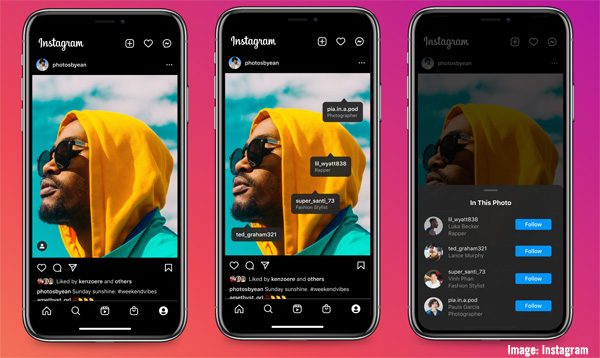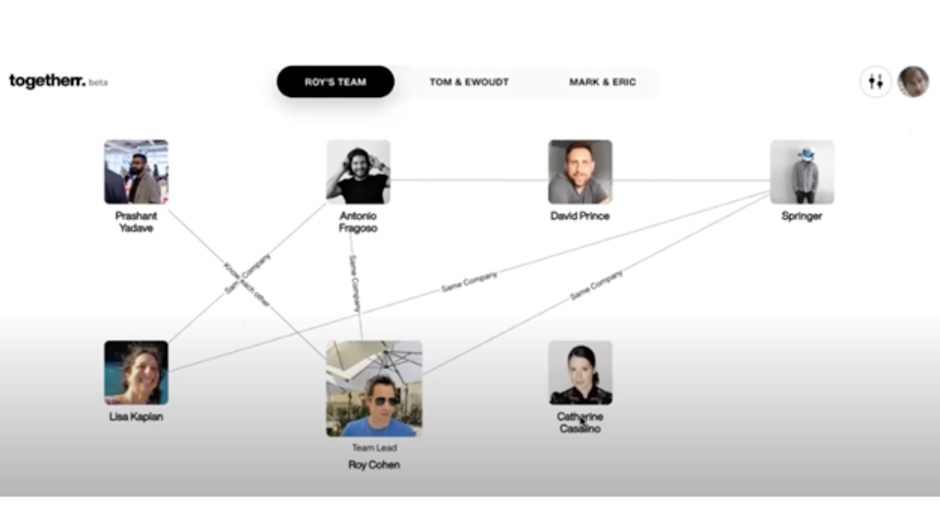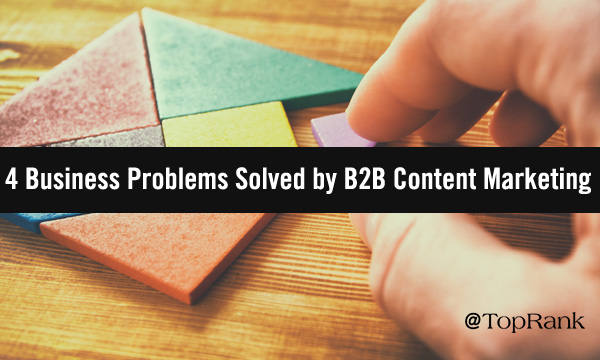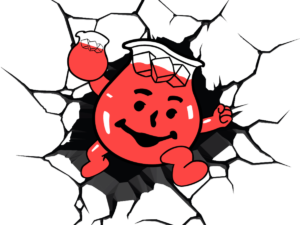By JP Botero
Crucial KPIs for B2B Marketing Success
Unlocking the true potential of B2B marketing requires a strategic approach, and at the heart of this strategy lies the indispensable concept of Key Performance Indicators (KPIs).
In his influential book, Measure What Matters, author John Doerr, a luminary in the business world, delves into the critical role of KPIs in shaping the success of B2B marketing endeavours.

In his book, Doeer shares examples of how Google and other B2B companies achieve success by focusing on the right KPIs.
As a seasoned venture capitalist and influential figure in Silicon Valley, Doerr draws upon his vast experience to underscore the importance of setting and tracking KPIs for businesses striving to achieve excellence.
This article navigates through Doerr’s perspective, shedding light on how KPIs serve as the linchpin for B2B marketers, enabling them to measure, analyze, and optimize their efforts.
As businesses strive for excellence and relevance in the dynamic B2B arena, Doerr’s wisdom becomes a guiding beacon, emphasizing the profound importance of KPIs in steering marketing strategies toward unparalleled success.
In this article, you will learn the most critical KPIs for every B2B marketer to bring the right results for his or her company.
Understanding B2B Marketing KPIs
Key Performance Indicators (KPIs) are the compass that guides businesses toward success.
Karl Pearson once said: “When performance is measured, performance improves. When performance is measured and reported back, the rate of improvement accelerates.”

You will only create real success once you understand the KPIs that bring the right results.
Understanding the intricacies of these metrics is pivotal for marketers striving to navigate the complex terrain of B2B interactions effectively.
The Role of KPIs in B2B Marketing
At the core of any successful B2B marketing strategy lies the fundamental understanding of the role that KPIs play.
According to John Doerr, KPIs are not just metrics; they are strategic tools that drive decision-making and performance evaluation.
In the intricate dance of B2B transactions, these indicators become the cornerstone for assessing the effectiveness of marketing efforts and refining strategies for optimal results such as sales, customer retention, and lead attraction.
Selecting the Right KPIs for Your Business
One size does not fit all when it comes to KPIs. Selecting the right metrics tailored to your business is a critical step in leveraging their potential.
If your business focuses on monthly services, your KPIs may differ from those of a company that sells its product just once.
The process involves a deep dive into the unique aspects of your industry, target audience, and business objectives. As business strategist Roger Martin says: “You need to understand what game you are playing first.”
Doerr also emphasizes precision in this selection, advocating for KPIs that align seamlessly with your specific business goals.
Aligning KPIs With Business Goals
Before you consider the most critical KPIs for your business, it is important to identify the end result you are seeking with your strategy.
If you want to create awareness and initiate a free trial with your campaign, your KPIs should be focused on web traffic, new subscribers, or the reach of your campaign.
In contrast, if your campaign intends to close the sale, your KPIs should focus on cart abandonment, daily orders, and A/B tests.
The synergy between KPIs and business goals is the linchpin for success in B2B marketing.
Doerr’s insights underscore the importance of aligning these metrics with overarching business objectives.
Whether it’s enhancing brand visibility, increasing lead generation, or optimizing conversion rates, each chosen KPI should be a strategic ally in advancing the organization’s broader goals.
Three Most Essential KPIs for B2B Marketers
Some essential KPIs should always be on your radar. However, you can get distracted by trying to track too many KPIs.
As Jim Collins, author of Good to Great, said: “If you have more than three priorities, you don’t have priorities.” The same applies for KPIs. If you have more than three KPIs, then you don’t have KPIs.

Amidst the myriad of available metrics, certain KPIs are essential for B2B marketers. These indicators serve as a compass, guiding businesses through the intricate B2B landscape and ensuring that they stay on course toward their goals.
These KPIs are website traffic, conversion rate, and customer lifetime value.
Website Traffic
Website traffic stands out as an essential Key Performance Indicator (KPI) for every B2B marketer.
The blood of every business is cash, and website traffic is the first step in the sales process to bring in money.
It serves as a barometer of the effectiveness of email campaigns, providing valuable insights into audience engagement and the impact of content.
If your marketing campaign is not bringing people to your webpage, you lose your money and efforts. It is like having a physical store that nobody ever enters to see what you offer.
Monitoring and enhancing website traffic signifies the success of email marketing efforts and offers opportunities to nurture leads and drive conversions.
Importance of Website Traffic for B2B Email Marketers
Audience Engagement and Interest: A surge in website traffic following an email campaign indicates that recipients are not only opening emails but also taking the desired action of visiting the website.
This demonstrates genuine interest and engagement with the content or offerings.
Lead Nurturing Opportunities: Website traffic is a precursor to lead generation.
By analysing the behaviour of visitors, B2B marketers can identify potential leads, understand their preferences, and tailor subsequent email campaigns to address specific needs, thereby nurturing leads through the sales funnel.
Conversion Tracking: Website traffic is closely linked to conversion metrics.
By tracking the journey of visitors from email click-throughs to specific landing pages or product pages, marketers gain insights into the effectiveness of their calls-to-action and can optimize for higher conversion rates.
Improving and Measuring Website Traffic
Measuring web traffic is very simple if you have the right service for it. With beehiiv, you can track all of the aspects involved in web traffic, such as demographics, time spent, etc.
Compelling Email Content: Crafting emails that pique curiosity and offer value is what will bring people to your website.
Engaging content encourages recipients to click on the website to learn more about your business and offers.
Two of the best practices to see if your content is creating that curiosity are through an engaging subject line and A/B tests.
Clear Call-to-Action (CTA): Include a clear and compelling CTA in emails, directing recipients to visit the website for exclusive content, promotions, or further information. A well-designed CTA increases the likelihood of click-throughs.
Segmentation and Personalization: Tailor email content based on audience segments.
Personalized emails resonate better with recipients, prompting them to visit the website for content that directly addresses their interests or pain points.
If you have a worldwide audience, send them the information in their preferred language.
Landing Page Optimization: Ensure that landing pages are user-friendly, relevant, and aligned with the email content. A seamless transition from email to website enhances the user experience and encourages prolonged engagement.
Analytics Tools: Leverage web analytics tools to measure website traffic, track user behaviour, and assess the impact of email campaigns.
Platforms like Google Analytics offer comprehensive insights into visitor demographics, sources, and engagement metrics.
In conclusion, website traffic is a critical KPI for B2B email marketers because it is the first step to getting clients. Also, website traffic provides a comprehensive view of campaign performance and audience engagement.
By employing strategic measures to improve and measure website traffic, marketers can optimize their email campaigns, nurture leads effectively, and drive meaningful conversions in the competitive B2B landscape.
Conversion Rate
The conversion rate emerges as a paramount Key Performance Indicator (KPI) that directly reflects the success of campaigns in turning leads into valuable customers. This is where the actual money comes to your account.
Understanding the significance of conversion rates and employing strategies to enhance and measure them are essential for B2B marketers striving to maximize the impact of their email initiatives.
The conversion rate directly measures how well an email campaign translates leads into desired actions, such as making a purchase, filling out a form, or downloading content.
Conversion rate becomes a crucial KPI For B2B marketers because it quantifies the return on investment (ROI).
Also, conversion rates offer more than just numerical insights; they provide a qualitative assessment of lead quality.
Analysing which leads convert and the nature of their interactions allows marketers to refine targeting strategies and focus efforts on the most promising segments.
Therefore, the conversion rate is essential because of the money it brings and because it tells you where it is coming from.
You can calculate your conversion rates by simply taking the number of conversions and dividing that by the number of total website visits.

For example, if you had 70 conversions from 1,000 interactions, your conversion rate would be 7%, since 70 ÷ 1,000 = 7%.
Now, if you want to measure an ad’s conversion, the formula works the same. Divide the number of conversions by the number of interactions from the ad.
Improving Conversion Rates
Compelling Copy and Design: Engaging copy, coupled with visually appealing design, enhances the likelihood of capturing the audience’s attention and driving them towards conversion actions.
According to a study, high-quality images increase conversions by up to 60%.
Strategic Call-to-Action (CTA): The CTA is the linchpin of conversion.
Some marketers use the same CTA for web traffic and conversion. That is a big mistake.
The web traffic CTA is focused on getting attention from the customer. The conversion CTA should be focused on benefits for the customer. Ensure that it is prominently placed, visually striking, and communicates the desired action.
A well-designed CTA motivates recipients to take the next step. If the customer never takes the next step, you will never have a conversion.
Personalization and Segmentation: Tailor email content based on recipient preferences and behaviours.
You can gather tons of information about behaviour from web traffic.
Personalized and segmented campaigns resonate better with the audience, increasing the likelihood of conversions.
Suppose you know that a possible customer has spent around 10 minutes looking at premium service but only 30 seconds looking at your basic service. In that case, you should use that information and offer the premium service in your emails.
Mobile Optimization: With a growing number of users accessing emails on mobile devices, optimizing email campaigns for mobile responsiveness is imperative.

A seamless mobile experience ensures that potential leads can easily convert regardless of their device.
Here is some data about the importance of optimization:
A/B Testing: Experiment with different elements of email campaigns, such as subject lines, copy variations, or CTAs, through A/B testing.
Analysing the performance of different elements helps identify the most effective strategies for improving conversion rates.
In conclusion, the conversion rate is a vital KPI for B2B email marketers, providing a direct measure of campaign success and lead quality.
Marketers can refine their email initiatives by strategically improving and measuring conversion rates, maximizing ROI, and driving meaningful business outcomes in the competitive B2B landscape.
Customer Lifetime Value (CLV) and Cost Per Lead (CPL)
Understanding and optimizing Customer Lifetime Value (CLV) alongside Cost Per Lead (CPL) emerge as indispensable Key Performance Indicators (KPIs).
Usually, these two are taken as two different KPIs; but since you need to know the cost per lead in order to calculate the customer lifetime value, it is better to see both as one.
These metrics not only gauge the efficiency of lead generation efforts but also provide valuable insights into the long-term impact of marketing strategies on customer relationships and revenue generation.
Importance of CLV and CPL for B2B Email Marketers
Long-Term Revenue Projection: Customer Lifetime Value represents the total anticipated revenue that a business expects from a customer throughout their entire relationship.
For B2B email marketers, this metric goes beyond immediate transactions, offering a strategic perspective on the long-term value of acquired customers.
Even with products sold once in a lifetime, you can always upsell, increasing the value of a lifetime customer.
Think of Microsoft, for example. You only buy the software once, but they offer Office and other cloud services as part of their portfolio.
Cost-Efficient Lead Generation: Cost Per Lead measures the expenditure incurred in acquiring a potential customer. When paired with CLV, it provides a comprehensive view of the cost-effectiveness of lead generation efforts.
A lower CPL, coupled with a higher CLV, signifies efficient marketing strategies that yield sustainable returns.
Resource Allocation: Understanding CLV and CPL allows B2B marketers to allocate resources more effectively.
By focusing efforts on channels and campaigns that demonstrate a favorable balance between cost and lifetime value, marketers can optimize budgets for maximum impact.
Why trust me: I have been working for a social media agency for the last four years, and understanding the CLV and CPL has helped us allocate our resources wisely.
For example, our CPL is around two times the money a customer spent on his first purchase; however, by focusing on the CLV, we have discovered that it is worth paying that price because the average customer stays with us for around one year.
That means that the CLV is around five times higher than our CPL. That is good business right there.
Improving and Measuring CLV and CPL
The formula used to calculate customer lifetime value is: Customer Lifetime Value = Customer Value x Average Customer Lifespan.

The formula used to calculate cost per lead is: Your Total Marketing Spend / Total Number of New Leads.

Segmentation for CLV: Tailor email campaigns based on customer segments to enhance CLV.
Different customer segments may exhibit distinct preferences and behaviors, allowing marketers to personalize content and nurture relationships effectively.
Customers will keep doing business with you if they feel supported by you. It could be a simple email every week asking for feedback or offering help. Thought leadership content is another fantastic way to engage them with you and your services.
Quality Lead Generation: Focus on generating high-quality leads to improve CPL.
Social media has made us think that more is better, but you don’t need to reach millions just to get one customer.
If you focus on getting your content in the eyes of the right people, you will get better conversion.
By refining targeting strategies, employing advanced lead qualification methods, and nurturing leads through personalized content, marketers can increase the likelihood of attracting valuable prospects at a lower cost.
Customer Retention Strategies: CLV is deeply intertwined with customer retention.
Implement strategies to enhance customer satisfaction, provide ongoing value, and encourage repeat business. Engaged and satisfied customers are more likely to contribute to a higher CLV. Make sure to be there for them as much as you can.
Another good strategy is to involve your customers in new launches or beta versions of new updates. They will feel valued, and your relationship with them will increase.
Lifecycle Email Marketing: Implement email marketing strategies that span the customer lifecycle.
From onboarding sequences to re-engagement campaigns, personalized and timely emails nurture customer relationships, increasing the likelihood of a higher CLV.
In conclusion, CLV and CPL are pivotal KPIs for B2B email marketers, offering a holistic view of the effectiveness of lead generation efforts and the long-term impact on revenue.
Remember this mantra: You want to be in business for years and decades, not just months.
By strategically improving and measuring these metrics, marketers can optimize resource allocation, enhance customer relationships, and ensure sustainable growth in the competitive B2B landscape.
Conclusion
Web traffic, conversion rate, and customer lifetime value (CLV) aren’t just metrics; they are the pillars of success.
Web traffic signifies engagement, conversion rates validate strategies, and CLV guides long-term growth.
These KPIs create a strategic trifecta, providing B2B marketers with a comprehensive toolkit for effective decision-making and sustainable success in the competitive landscape.
In this data-driven approach, these metrics cease to be numbers and become the driving force behind resource-efficient lead generation, impactful conversions, and enduring customer relationships.
By JP Botero
Sourced from beehiiv Blog
Join beehiiv today and get access to the most complete analytic tool for your B2B marketing efforts. With beehiiv 3D Analytic tool, you will have all of the information and data that you need to measure your KPIs and dominate your industry. Join now!













